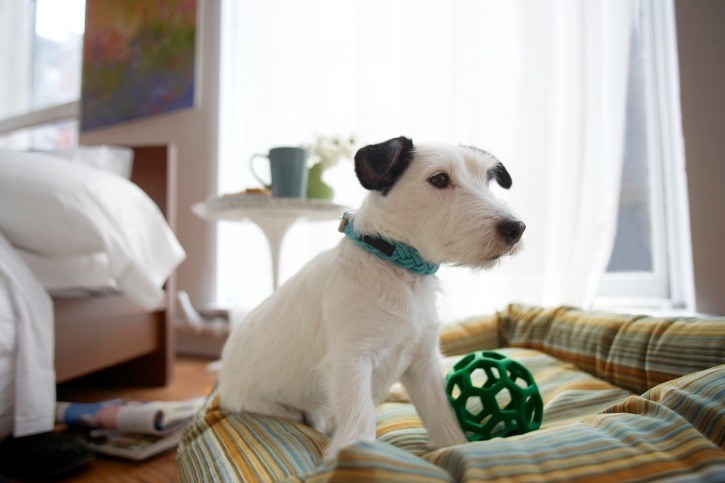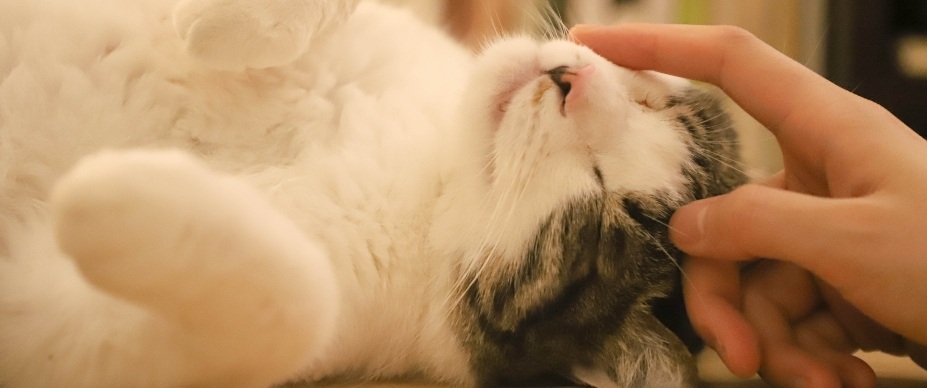Moving can be stressful, especially when you have furry friends to consider. Pets are sensitive to changes in their environment, and moving to a new home can be overwhelming for them.
However, with proper preparation and planning, you can make the transition smoother for both you and your pets. In this article, we’ll provide 10 tips to help you and your pets adjust to your new home with ease. From updating your pet’s ID tags to acclimating them to their new environment, these tips will ensure a stress-free move for everyone.
Tip 1: Update your pet’s tags and microchip information

Before moving, update your pet’s identification tags and microchip information with your new address and phone number. This helps ensure that if your pet becomes lost during the move or after you arrive at your new home, they can be reunited with you. Microchips are a good option as they contain a unique identification number that can be used to locate your pet. Remember to update the microchip information with your new contact information.
Consider getting a GPS tracking device for your pet. These devices can be attached to your pet’s collar and allow you to track their location in real-time using your smartphone.
Updating your pet’s identification information is essential in preparing for a move with pets. This ensures that your furry friend will be safe and secure during the move and in their new home.
Related: 5 Practical Tips for Organizing a Large Family Home
Tip 2: Visit the vet.

Before moving, schedule a visit to the vet to ensure that your pet is healthy enough to travel and to obtain any necessary vaccinations or medications. This is especially important if you are moving to a new state or country with different health requirements.
During the visit, ask your vet for copies of your pet’s medical records, including vaccination records and any prescriptions for medications your pet needs.
If your pet is prone to anxiety or motion sickness, ask your vet for recommendations for medications or other solutions to help your pet stay calm and comfortable during the move.
Visiting the vet before the move is crucial in ensuring that your pet is in good health and prepared for the journey ahead. It also allows you to obtain the necessary documentation and medications needed for the move.
Related: Need Extra Storage During Your Move? Here’s What You Can Do
Tip 3: Acclimate your pet to a carrier

If your pet will be traveling in a carrier, it’s important to acclimate them to it before the move. Start by leaving the carrier out in a common area of your home with the door open, so your pet can explore it on their own.
Once your pet seems comfortable with the carrier, begin feeding them their meals inside the carrier with the door closed. This helps your pet associate the carrier with positive experiences, like mealtime.
Gradually increase the amount of time your pet spends in the carrier with the door closed, starting with just a few minutes and gradually working up to longer periods.
If your pet is still uncomfortable with the carrier, consider using pheromone sprays or calming treats to help them relax.
Acclimating your pet to their carrier before the move can help reduce their stress during travel. By associating the carrier with positive experiences, your pet will be more likely to feel comfortable and secure during the journey.
Related: 8 Best Places to Buy Moving Boxes
Tip 4: Pack a bag for your pet

Pack a bag for your pet with their favorite toys, blankets, food, and water bowls. This will help your pet feel more comfortable during the move and in their new home.
Include enough food and water for the journey and a few days after you arrive at your new home. Bring any medications your pet needs, as well as a first-aid kit for your pet.
Make sure to pack any necessary documents for your pet, such as their medical records, vaccination records, and identification information.
Having a bag packed specifically for your pet will make the move smoother and ensure that your pet has everything they need during the journey and after you arrive at your new home.
Related: Why are people moving from Austin, TX?
Tip 5: Plan for breaks during travel
If you’re traveling with your pet by car, plan for regular breaks to allow your pet to stretch their legs, use the bathroom, and get some fresh air.
Research rest areas and pet-friendly hotels along your route in advance. Many hotels allow pets for an additional fee, so plan your overnight stays accordingly.
During breaks, make sure to keep your pet on a leash or in their carrier, and provide them with water and a chance to go to the bathroom.
If you’re traveling by air, research your airline’s policies regarding pet travel, and make sure to follow their guidelines for transporting pets.
Planning for breaks during travel is crucial in ensuring your pet stays comfortable and safe during the journey. Regular breaks also provide an opportunity for your pet to release energy and stretch their legs.
Related: Steps to Get Your Kitchen Organized After a Move
Tip 6: Introduce your pet to their new home gradually.

When you arrive at your new home, give your pet time to adjust to their new surroundings. Keep your pet in a quiet, safe room with their familiar items, like their bed and toys, while you unpack and get settled.
Once you’ve unpacked and set up your pet’s new living space, gradually introduce them to other areas of the house.
Supervise your pet as they explore their new environment, and make sure to secure any potential hazards, like loose cords or poisonous plants.
If you’re moving to a new area, make sure to update your pet’s identification tags with your new address and phone number.
Introducing your pet to their new home gradually will help them feel more comfortable and reduce their anxiety. Giving your pet a designated, safe space to start with will help them feel secure during the adjustment period.
Related: The Ultimate Guide About Living in South Austin, TX
Tip 7: Stick to your pet’s routine

Maintaining your pet’s routine can help them feel more secure during the move. Stick to their usual feeding, playtime, and exercise schedule as much as possible, even during the move.
If you’re traveling across time zones, gradually adjust your pet’s routine in the days leading up to the move to minimize the impact of the time change.
Once you’re in your new home, stick to your pet’s routine as closely as possible, even if it means temporarily adjusting your own schedule.
By sticking to your pet’s routine, you’ll provide them with a sense of familiarity and stability during a time of upheaval. This can help reduce their stress and make the transition to their new home easier.
Tip 8: Give your pet plenty of attention and love

Moving can be stressful for pets, and they may need extra attention and affection during the transition. Spend time with your pet, play with them, and give them plenty of love and attention.
Maintain your usual bonding routines, like cuddling or grooming, to help reassure your pet that they are still loved and valued.
If you have multiple pets, make sure to give each of them individual attention and make time for group play sessions.
By giving your pet plenty of attention and love, you’ll help them feel more comfortable and secure during the move. This can also help strengthen your bond with your pet and make the transition to your new home a positive experience for both of you.
Tip 9: Consider hiring professional pet movers.

If you’re unable to transport your pet yourself, or if you want to ensure the safest and most comfortable travel experience for your pet, consider hiring professional pet movers.
Pet movers specialize in transporting pets safely and comfortably, and they can provide a range of services, including transportation by air or ground, customs clearance, and pet boarding.
When selecting a pet mover, research their reputation, experience, and customer reviews, and make sure they are licensed and insured.
Hiring professional pet movers can provide you with peace of mind and help ensure the safety and comfort of your pet during the move
Tip 10: Have a plan in case of emergency

Even with careful planning, unexpected situations can arise during a move. It’s important to have a plan in case of an emergency, especially when traveling with pets.
Research veterinary hospitals and emergency clinics along your travel route and in your new area, and keep their contact information and directions easily accessible.
Pack a first aid kit for your pet, including any necessary medications, and make sure to bring your pet’s medical records with you.
Consider purchasing pet insurance or adding your pet to your existing insurance policy to help cover unexpected veterinary expenses.
By having a plan in case of emergency, you can help ensure the safety and well-being of your pet during the move.
A Final Word Of Advice By Real Firefighters
At ATX Firefighter Moving, we understand the importance of pets in our lives. That’s why we have a furry team member ourselves and as ex-firefighters, we know the bond that can develop between humans and animals. We strive to make moving with pets as stress-free as possible for both you and your furry friends.
It’s important to remember that pets have a strong instinct to return to their old homes, even if they don’t know the way. Giving your pets plenty of love and attention during the move, and showing them that your new home is their new home too, can help them adjust and feel comfortable in their new environment.
We hope these tips have been helpful for you and your furry friends during your move. Remember, with careful planning and attention, moving with pets can be a positive experience for everyone involved. Thank you for choosing ATX Firefighter Moving for your moving needs, and we look forward to helping you and your furry friends settle into your new home.

